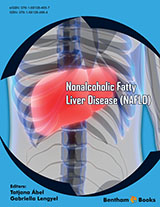Abstract
With the epidemic of obesity and metabolic syndrome, NAFLD is affecting a large number of the general population than ever before. Its diagnosis and monitoring can be challenging as it is more common in obese patients. It is a reversible condition, and reaching an early diagnosis could help in preventing and reversing the process. If left untreated, it can advance to liver cirrhosis, and lead to hepatocellular carcinoma in some cases. Therefore, its non-invasive accurate and early diagnosis has a significant importance in both patients and clinicians. Radiology has to offer a wide repertoire of methods that can diagnose and monitor this condition. Biopsy is very accurate, and is the only widely accepted method to distinguish NAFLD from other forms of liver disease, but its inconvenience to the patient and the general risks of invasive procedures limits its clinical use. In addition, biopsy cannot be representative to structural changes in the entire organ. Medical imaging until recent advances was not able to compete with biopsy. Non-invasive diagnostic tests that are used include ultrasonography (sonoelastography), computed tomography, and magnetic resonance imaging. Special MRI sequences (Chemical Shift Imaging, Fast SE Imaging, elastography, spectroscopy), which are capable of providing comparable results to biopsy. In contrast to biopsies, these methods provide a non-invasive way of giving a representative assessment of the whole liver.
Keywords: Cirrhosis, Fat suppression, Fibroscan, Hepatocellular carcinoma, Liver biopsy, Liver CT liver imaging, Liver MRI, Liver ultrasound, MR elastography, MR spectroscopy, Sonoelastography, Steatohepatitis, Steatosis, Steatosis imaging.

















